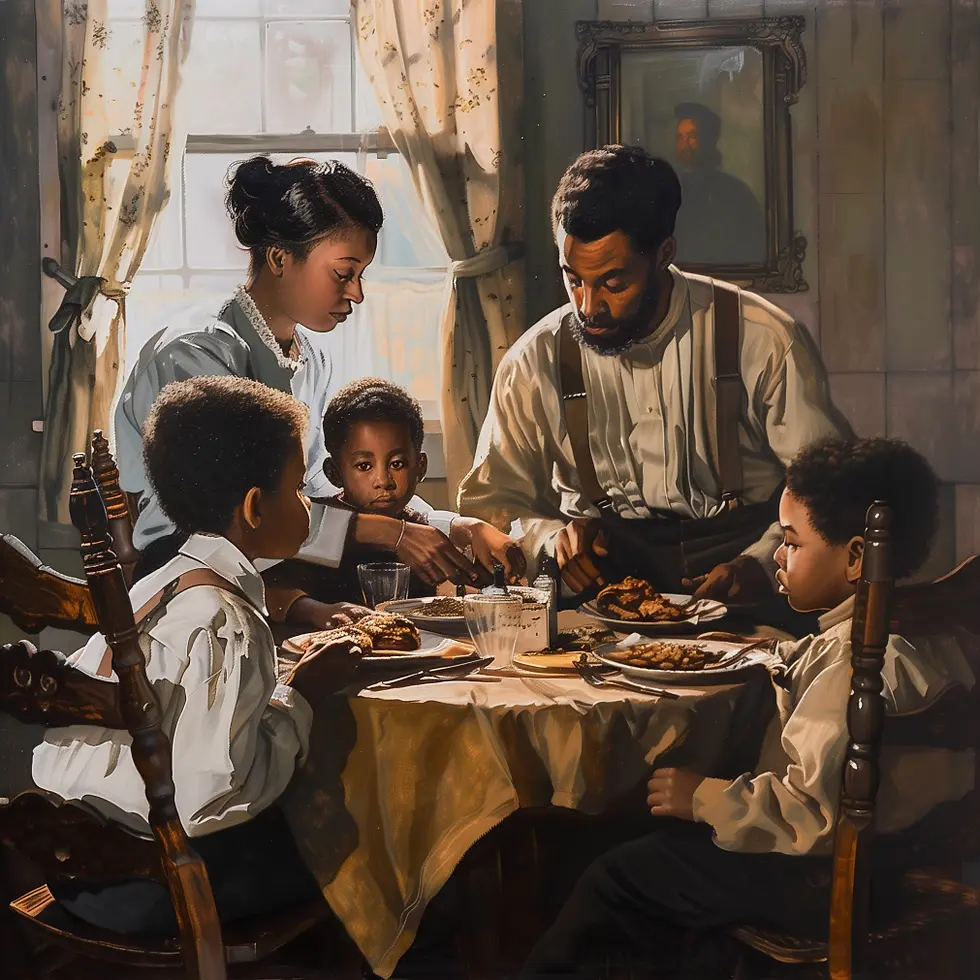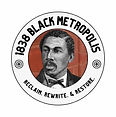The Gibbs Brothers Run the World
- 1838 Black Metropolis
- Feb 17, 2024
- 7 min read
Updated: Apr 20, 2024
We are so excited to be a new member of the National Park Service's Reconstruction Network. We know that the spatial stability of the Black Metropolis facilitated strong, organized Black leadership during reconstruction. We dedicate this post to those leaders of the full Black nation of the 19th Century.
This is the story of two Black boys from 1821 Philadelphia who grew up in the 1838 Black Metropolis to become the first Black elected judge in the United States and the first Black Secretary of State in Florida during reconstruction. And, we could argue, the reason why Florida A&M exists.
So Let's Start at the Beginning.
Jonathan Clarkson Gibbs was born in 1821 and he was followed quickly by two brothers, Mifflin Wistar Gibbs (1823) and Isaiah (circa 1825). Their father, Jonathan Clarkson Gibbs Sr., was a Methodist minister and their mother Maria was a washer.

They had a happy early life, going to Lombard Street public school, watching Richard Allen preach and living a boy's life in the neighborhood that is now known as Washington Square West

They lived on Eagles court just to the East of Currant Alley (S. Hutchinson).
In April, 1831 their father died suddenly. Jonathan and Mifflin had to leave school and earn money to support the family.
Both boys apprenticed with a Black carpenter named James Gibbons, who it turns out, was just about to get a contract to rebuild Mother Bethel AME. (Thanks to L. Williams dissertation for this info - see sources below).

As teenagers, both boys worked on the second Mother Bethel building alongside James.

Despite their close association with Methodism, they both converted to Presbyterianism and joined First African Presbyterian Church.

First African was a major church, and home to Pastor Charles Gardner who was instrumental in leading the efforts in the 1838 Civil Rights actions.

William Still was also a Presbyterian,

as was Jacob C. White Sr.

All of these men were central leaders of emancipation efforts for the whole Black community - organizing thousands of dollars, hundreds of people, and dozens of safe houses for freedom seekers who came into the city on a daily basis.
Both young men were most likely helping in this effort. Mifflin wrote an autobiography and he tells the story of acting as an agent to take William and Ellen Craft to Canada (see source below).
Leaving Philly
By 1848, Jonathan's brilliance was recognized by church leadership and they send him off to prep school in New Hampshire, to Kimball Union Academy, which still exists today. He follows Kimball Union to Dartmouth, where he graduates in 1852, the third Black graduate of Dartmouth, and where he delivers the commencement Address. He then goes on to Princeton to study theology but because of financial burden, he's unable to finish.

Back in Philly, Mifflin is rising is stature in the abolition movement and Frederick Douglass asks him to go to the 'Western Reserve' in New York to drum up support for abolition. He goes, but it doesn't suit him and he decides.
....to
go.
California. 🔥
(in 1850)
Yes. You read that right.
So in 1850 he takes a ship to the Panama Canal and then another ship to San Francisco. He quickly discovers that white men will put up too many barriers for him to practice carpentry so he opens up a shoe shop on Clay street that winds up being very successful.

He fights for Black rights in California and starts California's 🥇first Black newspaper. 🥇

By 1858, he's made good money and goes north to Victoria, British Columbia where he opens up another store selling to gold rush miners. By 1859, he's made enough to honor his promise to marry his wife Maria, who is already an Oberlin graduate. They return to Victoria where they happily raise a family.

Mifflin is later elected (1866) to Victoria city council making him🥇the first Black elected official in British Columbia, Canada.🥇
Trouble

Back on the East Coast, things aren't going so great for Jonathan. He's married to Anna Amelia Harris and the pastor of Liberty Presbyterian Church in Troy, NY, where Henry Highland Garnet was the pastor. While he is super active on the abolitionist circuit, his marriage is falling apart. He decides to file for divorce and enters into a custody battle for their three children.
Staying at Liberty with all this drama was too much and he decides to find another church. In Philly, his home church, First African Presbyterian has an opening and he goes home.

In 1860, he moves in with the Still Family. William Still, in addition to his Underground Railroad work, is just starting up the Social, Civil, and Statistical Association (SCSA), a civil rights group.

The SCSA begins to meet routinely at Benezet hall and they take on the streetcar fight for civil rights. Jonathan becomes the recording secretary and the head of the civil rights committee.
Note: This may be the first time that the term 'Civil Rights' is used by a Black civil rights group in Philadelphia and maybe, in the country. We see instances of use of the word 'rights' but not 'civil rights' in the documents we read from that time.
In the 1860s, Black people were not allowed to ride streetcars in Philadelphia. One day, in November 1862, Rev. Richard Robinson, an elderly Black man, was finishing work in Frankfort. It was late, and raining. The streetcar driver refused to let him sit in the car. Instead, he had to stand on the front pavilion. The car ran into a hay truck and Rev. Robinson later died of his injuries. (Thanks to Stephen Angell for this info. See sources below)

Jonathan led SCSA efforts to ensure legal recourse for Rev. Robinson's family. This excerpt is from the SCSA notes where the Civil Rights committee, led by Jonathan, decides to aid the family in prosecuting the case.

Jonathan was also a part of the effort to raise the Colored Troops.

So Philly was going ok for Jonathan until... it appears that he ran into some disagreements with church leadership.

You may have heard of Emilie Davis and her famous diary. Emilie was a young Black woman living in Philadelphia during the civil war and her writings in her diary helps us understand the lived Black experience at that time.
We thank sister Karsonya Wise Whitehead for her incredible work in bringing Emilie's diary to light.
Emilie attended First African Presbyterian and she wrote about seeing Rev. Gibbs alot.

She also seemed to be privy to internal church organization and in May, 1863 she wrote that there was "gaddys wonder" about DJJG (Dr. James J.G. Bias) and his lady (Eliza). By this time Eliza had passed away (she died in 1855).
The connection between Dr. Bias, Eliza and Jonathan taking a wife seems to indicate that all three came up in conversation together.

Then in June 1863, we see this.

Welp...Jonathan leaves Philly.
Reconstruction Leadership
He goes south. First to Charleston, South Carolina where he opens a school. Then two years later to Jacksonville, Florida where he also opens another school.
By 1868, Jonathan is elected🥇Florida's first Black Secretary of State during Reconstruction. 🥇

In 1874, after dinner, Jonathan goes to bed and mysteriously dies. Many believe he was poisoned by the KKK. He was 52 years old.
Let's Get Some Mifflin Energy Going
Around this time Mifflin has left Victoria and supported his children's educations at Oberlin and BTW also decides to study law and passes the bar when he's 47 years old.
He's also still fighting for rights and an active leader in the Republican party. He decides to move to Little Rock, Arkansas and open his own law firm.

Eventually, he is elected as Municipal Judge in Little Rock making him the🥇first Black elected judge in the United States.🥇He becomes quite wealthy and when he is 75 he is appointed the American Counsel to Madagascar and moves to Africa. After that, he moves to DC and then dies at the ripe age of 92 in Little Rock.
But wait...there's more
First, Mifflin's daughter Harriet graduates with an degree in music from Oberlin and opens the Washington Conservatory of Music in DC in the early 1900s.
And Thomas, Jonathan's son, becomes a legislator in the Florida state legislature. He introduces legislation in 1885 to start the Florida Normal School for Black higher education. Florida Normal eventually becomes Florida A&M.

Closing Thoughts
So that is how two boys from Eagles court, supported by the stability of the 1838 Black Metropolis, grew to become influential Black leaders during Reconstruction. We think that there were very important lessons learned about the critical need to fight for human rights that both men absorbed in Philadelphia. That foundation led them to a life of incredible achievement.
We also love this story because there is a prevailing idea that most 19th century Black leadership in Philadelphia came from Black elites. This story broadens that truth into a deeper holistic narrative that includes regular people. When we classify all leadership as elite we also bring elite exclusionary stereotypes into the conversation; the assumption that elites only stayed within thier own sphere in all settings. A lot of this stereotype sources from Joseph Wilson's narrative. But this story helps us understand that perhaps while there may have been exclusion in social circles, in public places, like first African Presbyterian and in schools, all classes connected.
Next time you're passing by 11th and Spruce, shout out the Gibbs brothers.
We encourage you to read Mifflin's autobiography. It's incredible. Also the esteemed Carter G. Woodson made sure to include this history in the 1947 Negro Bulletin and you can see that here.
Sources:
Angell, Stephen W. “The Shadows of the Evening Stretched Out: Richard Robinson and the Shaping of African Methodist Identity, 1823–1862.” Journal of Africana Religions, vol. 3, no. 3, 2015, pp. 227–50, https://doi.org/10.5325/jafrireli.3.3.0227.
Gibbs, Mifflin Wistar. Shadow and Light : an Autobiography with Reminiscences of the Last and Present Century. [s.n.], 1902.
The Negro History Bulletin 1947-10: Volume 11, Issue 1.
Whitehead, K. W., & Davis, E. F. (2014). Notes from a colored girl : the Civil War pocket diaries of Emilie Frances Davis. The University of South Carolina Press.
Williams, L. (2003). “A wider field of usefulness”: The life and times of Jonathan Clarkson Gibbs, c.1828–1874. ProQuest Dissertations Publishing.
3/10/24 Update
Turns out...







